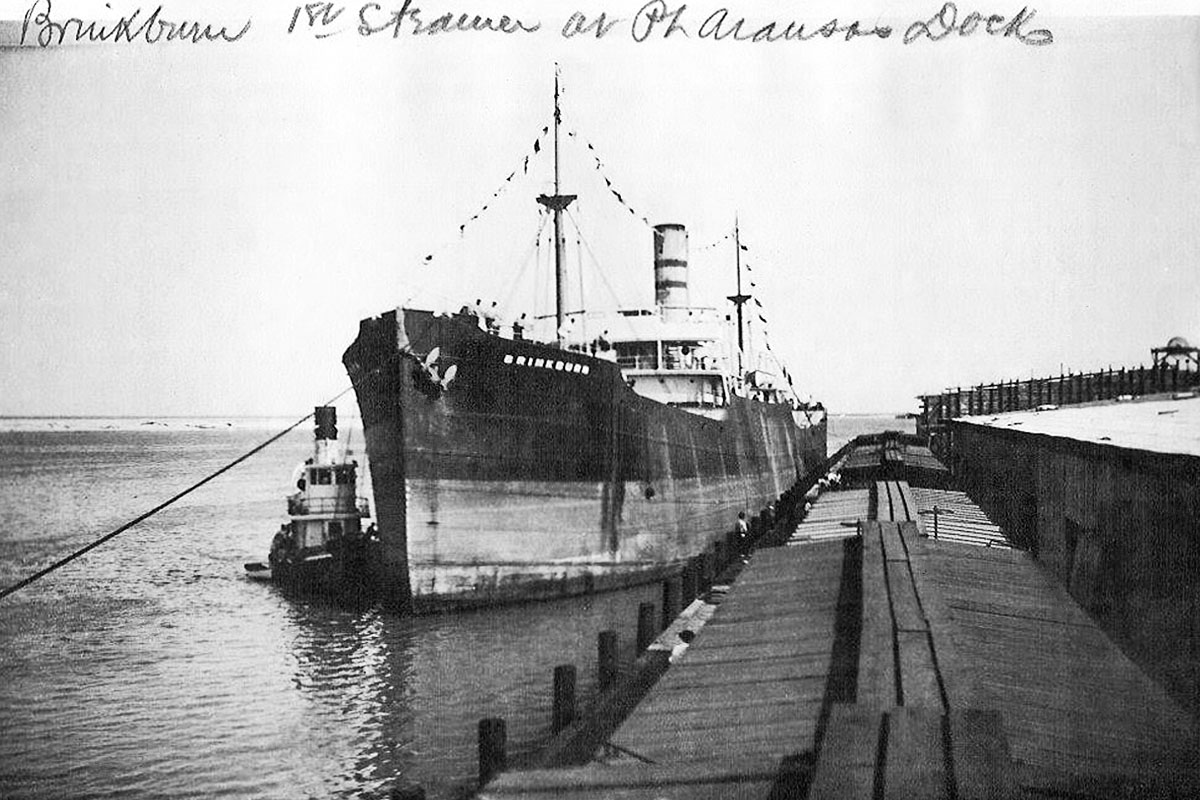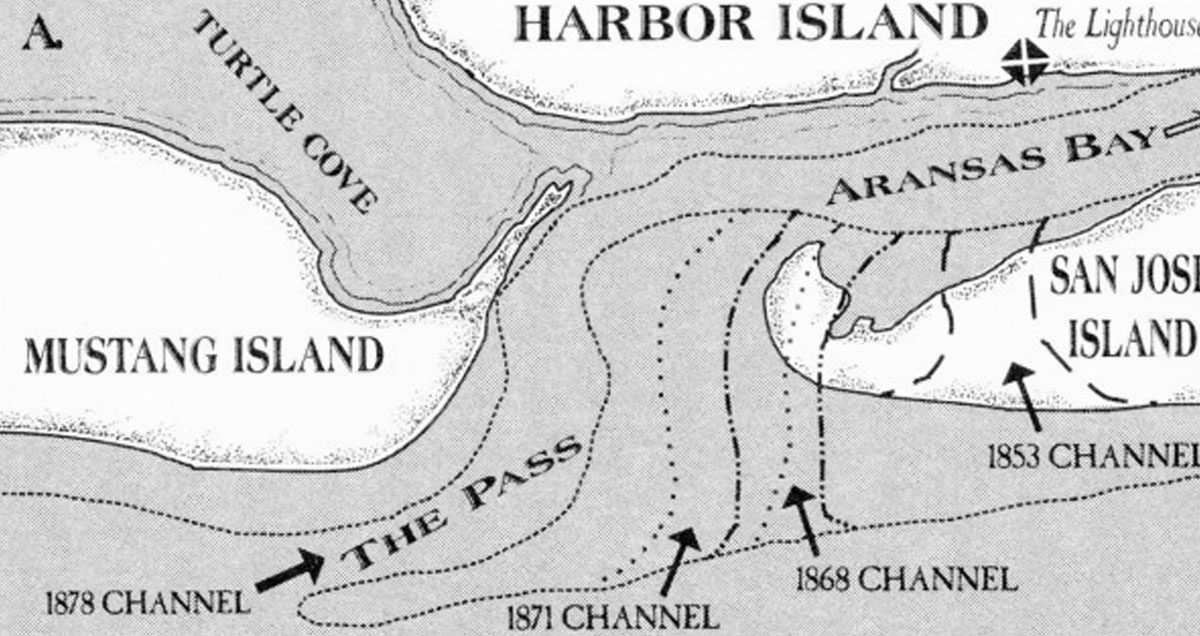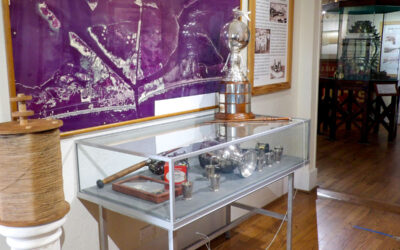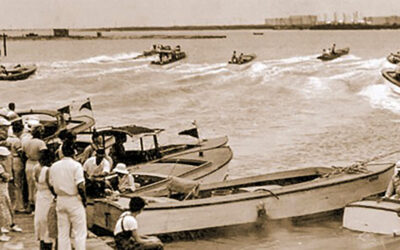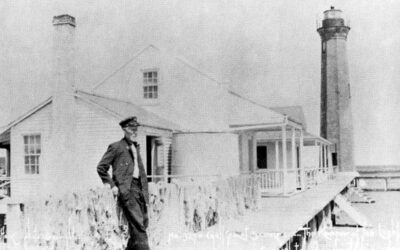The Pass Must Be Caught
With the coming of the lighthouse it became even more apparent that the channel must be tamed.
The first attempt was made by a group of business people from Rockport. They raised $10,000 to build a 600’ long rock revetment along the south shore of the pass.
A survey by the Army Engineers two years later showed no trace of the rock wall. The pass had rolled right over it.
The U.S. Government Tries Its Hand
The next chance to catch the migrating channel was led by Major Mansfield of the Army Engineers.
The job took five years starting in 1880 and ending in 1885. A 5500’ long jetty was built of a brush mattress covered with stone. It started on Mustang Island and ran to the wreck of the Mary, a steamer that sank in the pass 10 years earlier. From there it turned sharply to the north.
Stone rip-rap was placed along an area of Mustang Island to help prevent the shoreline from eroding away. This one, known as the Mansfield or Old Government jetty, greatly improved the situation by slowing the migration to 70’ per year.
They were now on the right track. Immediately after finishing the Mansfield jetty the Army concluded that a second one on the San Jose (north) side of the channel was necessary to complete the job. However, the city of Galveston ended those hopes by successfully lobbying to have all available funds spent on improving their pass.
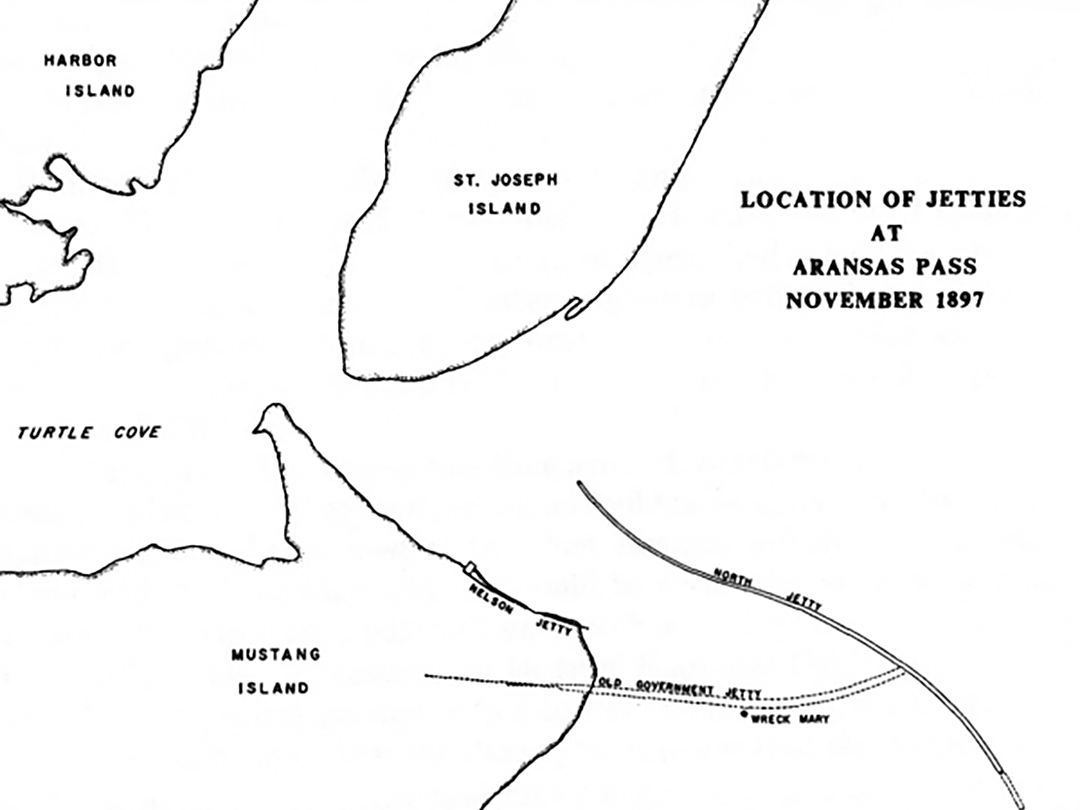
The Aransas Pass Harbor Company
Largely because Galveston received all the available money for channel improvements, The Aransas Pass Harbor Company, a private group, sought and won congressional approval to tame the pass in 1890. The state of Texas added that if they delivered a 20’ deep channel by 1899 the company could buy all the land they needed to build a major seaport and town next to the pass for $2.00 per acre. The match between man and the channel went into round three.
The company went to work and built two jetties, one from Mustang Island called the Nelson Jetty, and one from San Jose called the Haupt Jetty.
The Haupt Jetty: A Grand Idea That Didn’t Work
The Aransas Pass Harbor Company hired Lewis Haupt, a professor from Philadelphia, and his associate, H.C. Ripley of Galveston. They called their creation a Reaction Breakwater and claimed it would “produce reactions similar to those of concavities in streams,” and that this single jetty, unattached to land, would if built to 3750’ produce a channel 15’ deep. If extended to 6,200’ it would generate a depth of 20’. They began the job in August 1895 and declared it finished in September 1896.
It did not work.
Now the company was nearly broke and running out of time. They decided to make one last go-for-broke effort. They hired a company to use 23,350 pounds of dynamite (enough to fill a house) to blow out the channel to the needed 20’. This desperate attempt failed but it must have made a mighty sound. Regional historian John Guthrie Ford calls this the Big Bang.
The Aransas Pass Harbor Company was broke. The pass had won again.
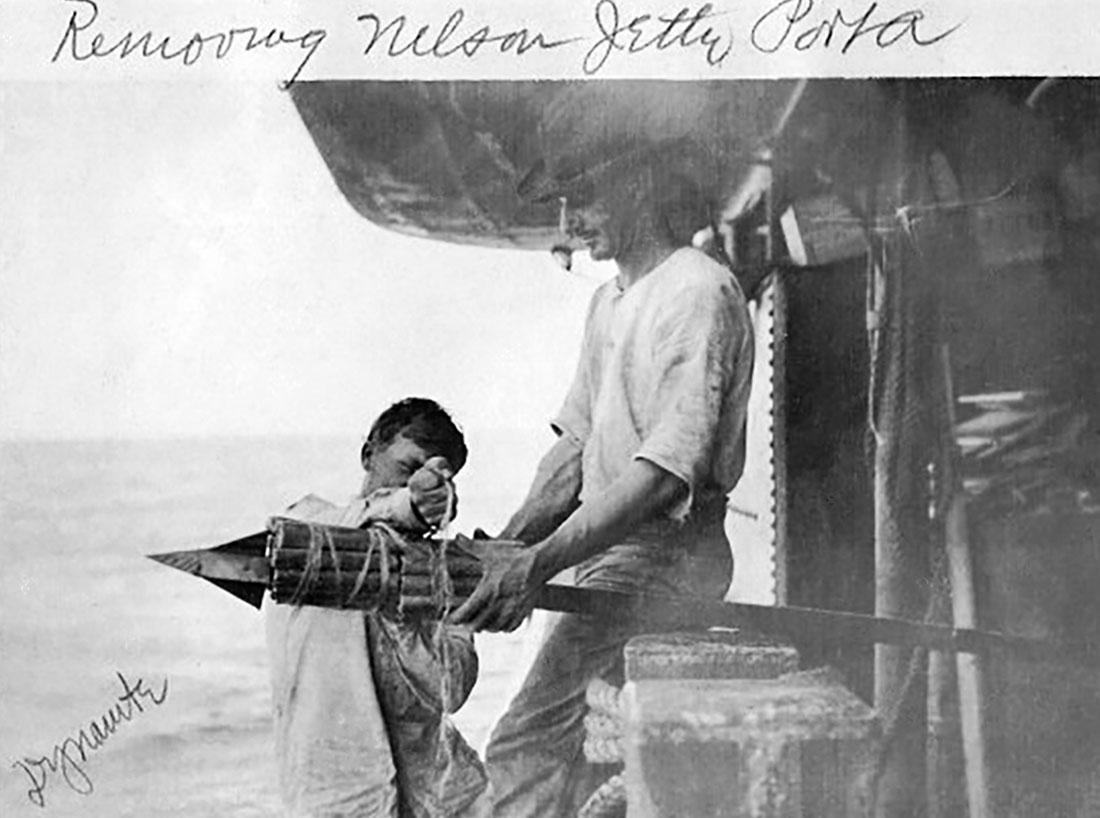
The Government Takes Over the Fight
Thomas Benton Wheeler, secretary of the failed Aransas Pass Harbor Company, still believed the job could be done. He went to Washington D.C. to convince Congress and the Army that they should once again take on the struggle to control the channel. ‘We have done the hard part’, he reasoned, ‘now you can come in and just finish it up.’ After much political wrestling and shifting, the U.S. government agreed to take on the job.
In reality, the Harbor Company had left behind a big mess and the situation was now much tougher than before their failed attempts. The Army Engineers faced the task of cleaning up two badly deteriorated south jetties and either fixing the questionable Haupt Jetty or demolishing it and starting over from scratch.
Professor Haupt must have been a good talker, for he convinced the Army Engineers that the construction had been improperly done but could easily be fixed, thus saving money (and rescuing the Professor’s reputation).
The Army Engineers bit and set about to repair the botched job.
They quickly discovered that mere repairs would not solve the problem. Instead, they extended the odd, free standing jetty to join with the shore line of San Jose Island like a normal jetty. Then they addressed building a brand new south jetty from the Mustang Island shore.
Only the U.S. Army was big enough to do this one. And they did. In 1910 the job was initially finished and the pass was at last open.
The Town of Tarpon Becomes Port Aransas
Our town, Tarpon, took the name Port Aransas, and the area we now call Harbor Island became the first major seaport for the area.
There was a week long celebration when the first ocean going ship, the Brinkburn, was docked.
